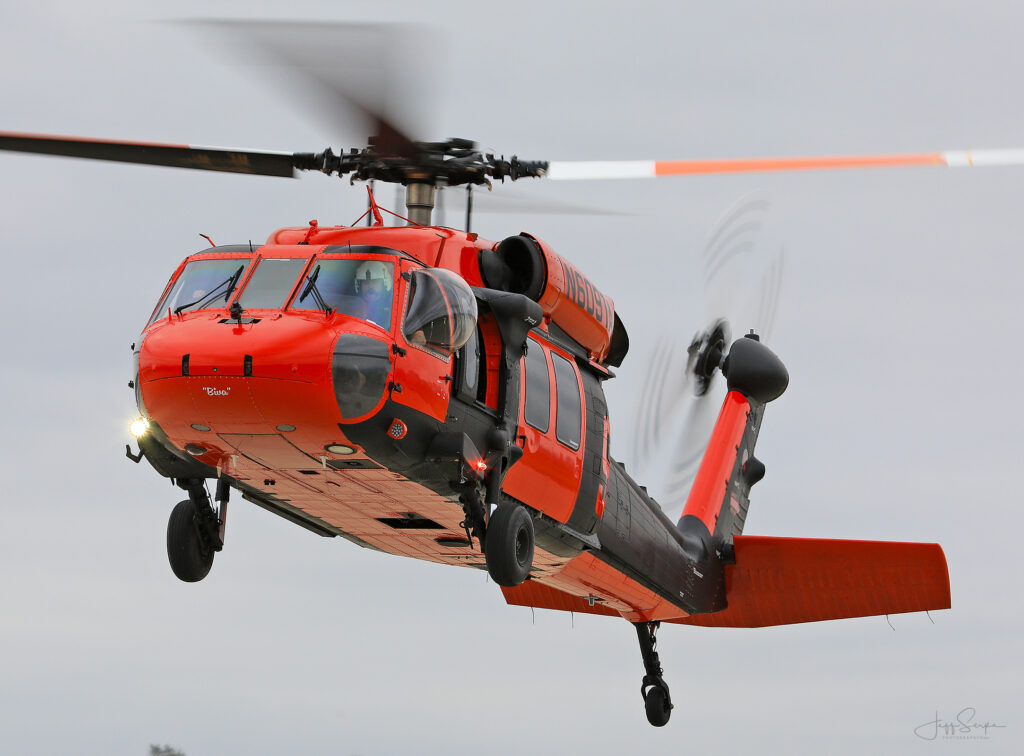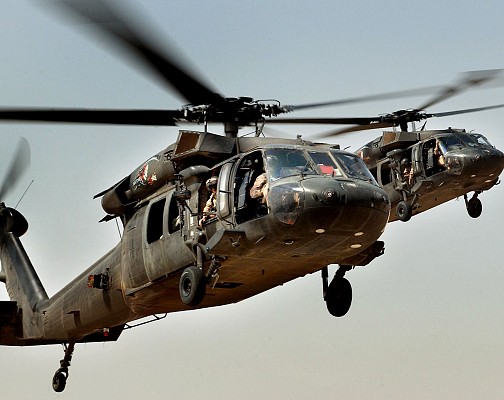The Duty of the UH 60 in Modern Armed Force Operations
The UH-60 Black Hawk has become an important part of modern-day military operations, demonstrating exceptional adaptability in a variety of tactical settings. uh 60. Its capacities expand past mere troop transport, encompassing crucial functions in medevac and logistical assistance, which are necessary for goal success. The Black Hawk's advanced technology and adaptability to diverse battle circumstances highlight its calculated value. As armed forces needs progress, inquiries develop relating to the future of the UH-60 and its prospective innovations. What advancements lie ahead for this famous aircraft, and how will they form its function on the combat zone?
History of the UH-60
The UH-60 Black Hawk's development marked a considerable advancement in armed forces aviation, progressing from the need for a flexible energy helicopter that might sustain a large range of functional needs. Started in the late 1950s and early 1960s, the united state Army sought a substitute for the aging Bell UH-1 Iroquois. The design intended to address the boosting intricacy of military operations during the Cold War, necessitating a system efficient in troop transportation, medical discharge, and cargo lift.
The Sikorsky Aircraft Company was granted the contract in 1972, resulting in the very first trip of the prototype in 1974. The UH-60 entered service in 1979, promptly developing itself in various battle and altruistic missions - uh 60. Its longevity, speed, and advanced avionics made it a necessary asset in the U.S. military's toolbox, especially throughout problems such as the Gulf Battle and operations in Iraq and Afghanistan
For many years, the Black Hawk has gone through countless upgrades and variants, ensuring its relevance in modern warfare. As military demands continue to progress, the UH-60 stays an essential component in the functional capabilities of the armed pressures.
Secret Features and Specs

The UH-60 has an optimum takeoff weight of 22,000 extra pounds, allowing it to carry a significant haul, consisting of soldiers, devices, and clinical products. It can fit as much as 11 soldiers in its army area, showing its ability to sustain diverse functional demands. The rotor system, featuring a four-bladed major blades and a four-bladed tail rotor, adds to enhanced security and maneuverability in different environments, consisting of metropolitan and hilly terrain.
Furthermore, the helicopter is geared up with sophisticated avionics and navigation systems, improving situational understanding and functional effectiveness. The mix of these specs emphasizes the UH-60 Black Hawk's critical function in modern-day armed forces aviation, making it a critical asset for militaries worldwide.
Tactical Duty in Combat
Frequently released in various battle situations, visit here the UH-60 Black Hawk offers numerous tactical duties that enhance its worth on the field of battle. Mainly recognized for troop transport, this functional helicopter effectively relocates workers and equipment right into and out of hostile atmospheres, making sure fast action capacities. Its ability to operate in both night and day problems, coupled with innovative avionics, permits precise insertion and removal of forces.
Along with troop transportation, the UH-60 is furnished for medevac procedures, supplying important support to wounded soldiers throughout combat. With specialized clinical tools and personnel onboard, the Black Hawk can promptly evacuate casualties, significantly boosting survival rates.
Additionally, the Black Hawk plays a crucial duty in logistical support, delivering materials and ammunition directly to frontline systems. Its durable layout allows it to lug significant hauls, assisting in sustained procedures in austere conditions.
The helicopter likewise works as a platform for close air support, integrating with ground pressures to give aerial reconnaissance and fire assistance. This complex capability emphasizes the UH-60's essential function in contemporary armed forces procedures, adjusting to the advancing dynamics of battle.
Good Samaritan and Rescue Goals
Humanitarian and rescue missions are vital components of the UH-60 Black Hawk's operational abilities, showcasing its convenience past combat duties. The aircraft's design enables it to effectively move workers, materials, and clinical devices, making it a vital property in crisis scenarios. In disaster-stricken areas, the UH-60 can provide essential help, including food, water, and clinical support, directly to impacted populaces.
In Addition, the useful content Black Hawk masters search and rescue procedures. Its innovative avionics and all-weather capabilities enable it to execute objectives in difficult settings, whether mountainous surface or damaging weather. This adaptability is better improved by its ability to deploy customized rescue groups and hoists, making certain rapid extraction of people in distress.
The UH-60's capability to run in both city and remote areas facilitates prompt responses to emergency situations, including natural catastrophes, humanitarian crises, and medical discharges. Its duty in these missions not only conserves lives yet also promotes a good reputation and strengthens community relations. Eventually, the Black Hawk's payments to humanitarian and rescue efforts emphasize its importance as a multi-role platform within contemporary army procedures, strengthening its dedication to support and shield private populations in need.

Future Developments and Innovations
As army technology constantly develops, the UH-60 Black Hawk is positioned to undergo considerable future growths and developments that will enhance its abilities. Trick developments are expected in avionics, propulsion systems, and products, ensuring the Black Hawk continues to be a crucial asset on the battlefield.
One substantial location of emphasis is the assimilation of innovative avionics, including boosted situational recognition systems and artificial intelligence-driven navigating tools. These technologies will certainly enhance functional efficiency and decision-making throughout complex objectives. Furthermore, upgraded propulsion systems may provide better fuel effectiveness, expanded range, and boosted total performance, allowing the helicopter to run in diverse settings.
Additionally, the growth of composite materials and progressed manufacturing techniques promises to reduce the airplane's weight while keeping structural go right here stability - uh 60. This reduction will improve trip features and functional versatility

Collectively, these advancements will certainly guarantee that the UH-60 Black Hawk stays a keystone of contemporary armed forces operations well into the future.
Verdict
The UH-60 Black Hawk remains integral to contemporary military procedures, showcasing adaptability in fight and support roles. The Black Hawk's performance in altruistic and rescue initiatives underscores its importance beyond the battlefield.
The UH-60 Black Hawk has arised as an indispensable part of contemporary military procedures, demonstrating unequaled versatility in an array of tactical settings.The UH-60 Black Hawk's development marked a considerable innovation in armed forces aeronautics, advancing from the need for a flexible utility helicopter that could support a wide range of operational requirements.Notable for its versatility and efficiency, the UH-60 Black Hawk includes an array of specs that improve its effectiveness in various army procedures.Humanitarian and rescue goals are important elements of the UH-60 Black Hawk's operational capacities, showcasing its convenience past fight duties.The UH-60 Black Hawk stays integral to modern army operations, showcasing flexibility in combat and support roles.
Comments on “Why the UH 60 Helicopter is Critical for Modern Military Operations”